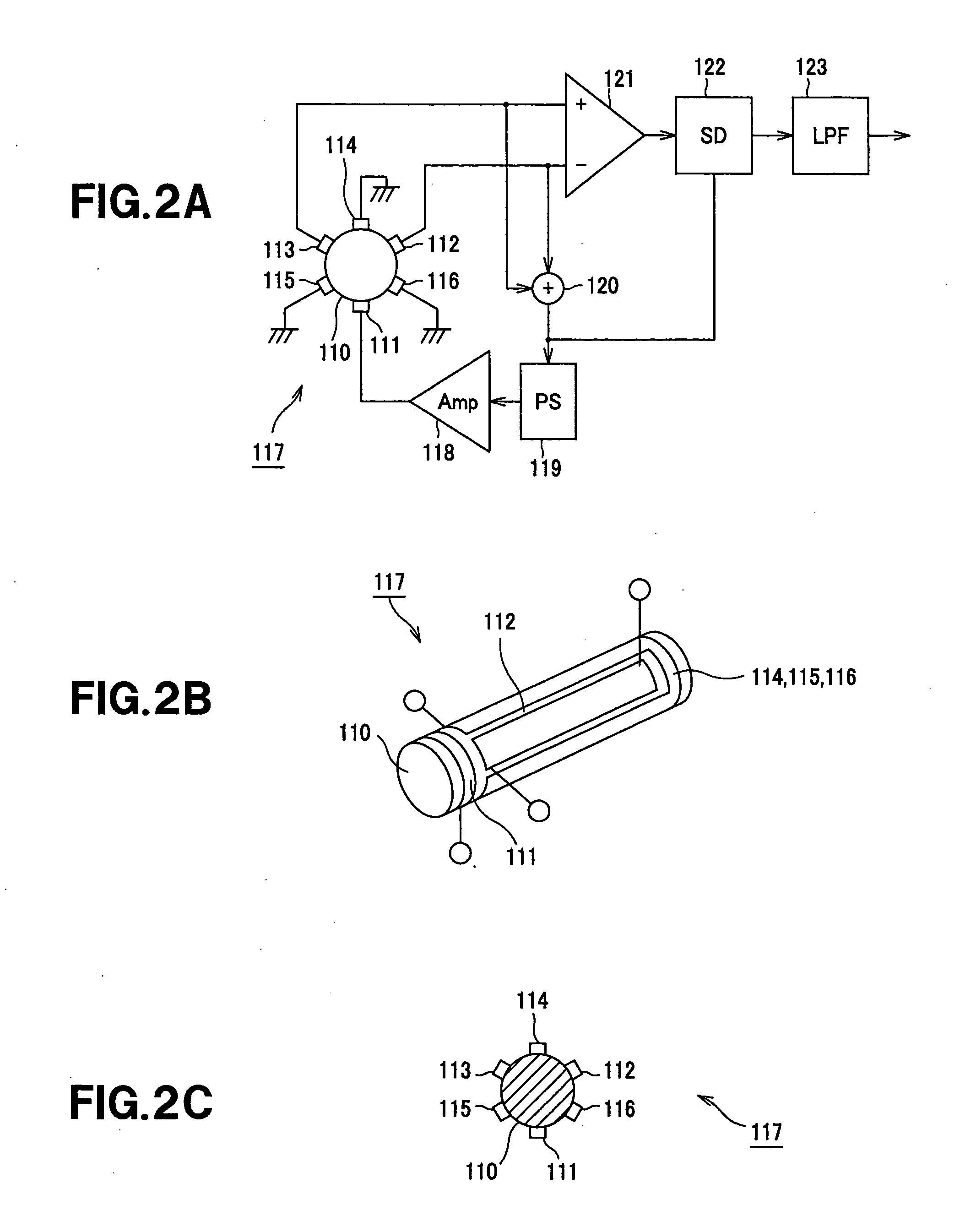Angular rate sensor
a technology of angular rate sensor and angular rate, which is applied in the direction of acceleration measurement using interia force, turn-sensitive devices, instruments, etc., can solve the problems of inability to produce high volume efficiency in manufacturing process, difficulty in achieving high-volume efficiency, and rapid decrease of sensitivity for detecting coriolis force. , to achieve the effect of high-cost performance, not losing accuracy and simple structur
- Summary
- Abstract
- Description
- Claims
- Application Information
AI Technical Summary
Benefits of technology
Problems solved by technology
Method used
Image
Examples
Embodiment Construction
[0035] An embodiment of the present invention will be described below in detail with reference to the accompanying drawings. The present invention is not limited to the following examples, and can be variously modified without departing from the spirit and scope of the invention.
[0036]FIG. 4 is a perspective view showing an oscillator 1a provided in an angular rate sensor 1 to which the present invention is applied. FIG. 5 is a block diagram showing an example of a circuit for realizing the angular rate sensor 1.
[0037] The angular rate sensor 1 according to the present embodiment includes, as shown in FIGS. 4 and 5, the oscillator 1a acting as an oscillation gyro.
[0038] The oscillator 1a is formed by laminating a substrate 2 and a piezoelectric material 3 and formed into a quadratic prism-like shape having a rectangular cross section when the oscillator is cut with a plane perpendicular to the longitudinal direction thereof. The substrate 2 of the oscillator 1a is made of e.g., a...
PUM
 Login to View More
Login to View More Abstract
Description
Claims
Application Information
 Login to View More
Login to View More - R&D
- Intellectual Property
- Life Sciences
- Materials
- Tech Scout
- Unparalleled Data Quality
- Higher Quality Content
- 60% Fewer Hallucinations
Browse by: Latest US Patents, China's latest patents, Technical Efficacy Thesaurus, Application Domain, Technology Topic, Popular Technical Reports.
© 2025 PatSnap. All rights reserved.Legal|Privacy policy|Modern Slavery Act Transparency Statement|Sitemap|About US| Contact US: help@patsnap.com



